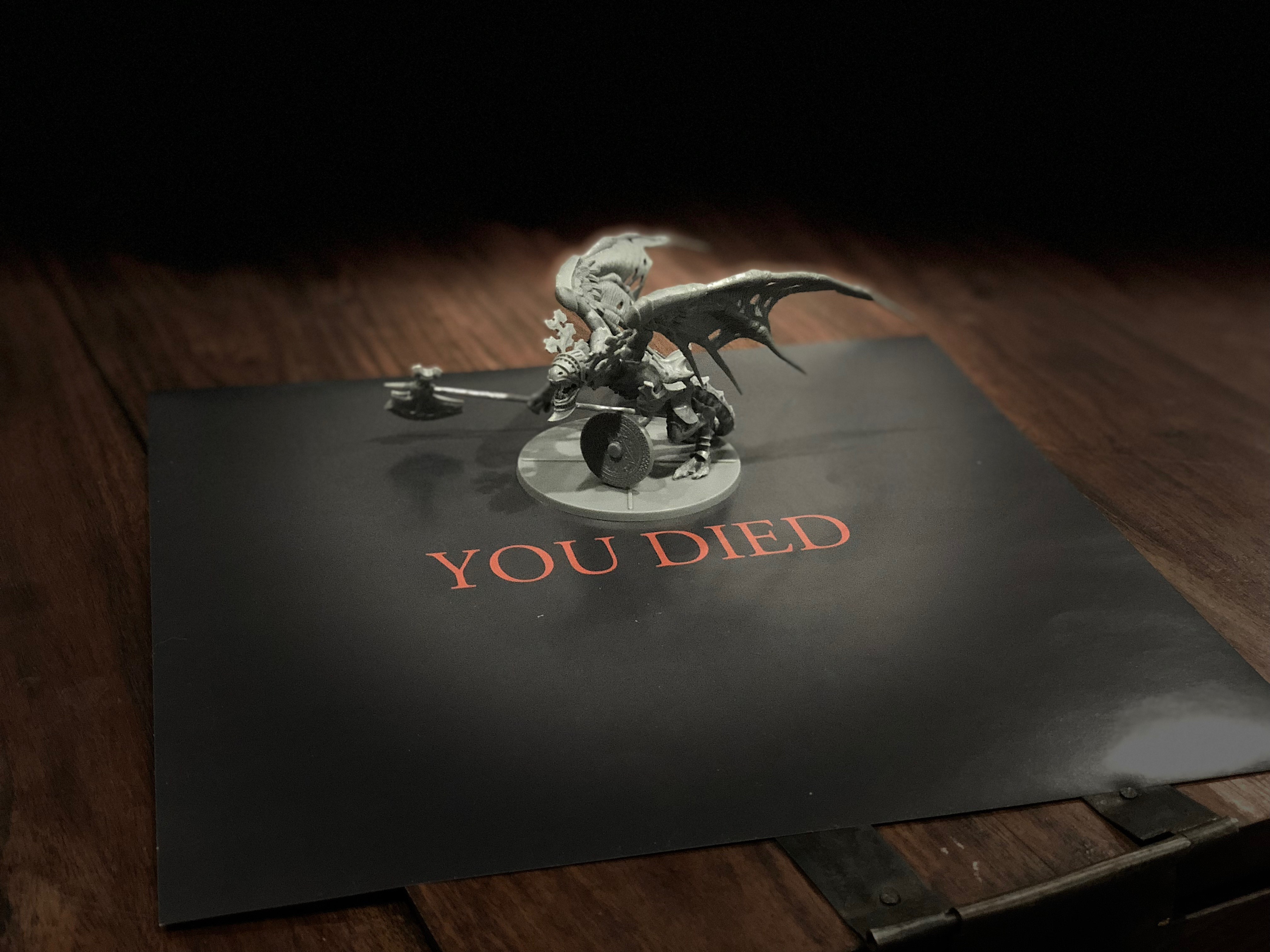Dark Souls: The Board Game pits players cooperatively against large sprawling dungeons full of enemies. With the objective to destroy bosses, this becomes difficult.
Made for 1-4 players (ages 14+), the game is not easy to learn. There are 2 modes: standard and campaign. We played standard, and to get as far as we did, we played 2 previous times. The first experience involved arguing and reading the frustrating, unorganized rule book for a solid two hours. We played again, losing but learning. This time, we still didn’t finish!
We died.
I expected the gameplay to be difficult. It’s Dark Souls. It’s supposed to be difficult – that’s the point. The point, however, shouldn’t be to play boring encounters in order to level up to where the game is fun. It’s not satisfying.
The basic encounters come in two phases. In the first, enemies have basically no health and very little defense. Action cards direct their movement but add very little variance. This requires no strategy, but you get souls! Tier two is slightly more difficult. However, player health and stamina reset after each fight; so there was never any danger here either.
After getting through the encounters came the first real choice: Do we rest at the campfire or traverse the fog wall? Resting resets the boring rooms and refills estus flasks. We had full estus, but we needed souls to level up. We were also two hours into the game, due once again to mostly consulting the blasted rule book. We wanted something more exciting than a dice roll guaranteed to win. Since there was no negative to losing (we restart at the bonfire just like resting), we chose to traverse the fog.
It seems that the creators took every interesting idea they had, threw them into the boss, laughed manically, and then packaged the game.
Fighting the gargoyle was complicated but doable. A randomized card deck represents the boss’ actions. These repeat in the same order, so you can learn them. Attacks have a safe zone and weak spot, but we had terrible memories and didn’t understand the repetition until round 3. Oops.
But the game was finally interesting! Attacking weak spots while avoiding attacks and waiting in blind spots required memory and strategy. We had to think about our actions and balance them.
We did terribly.
We finished round 1, but then the boss goes berserk and enters the “heat up” phase. This is different for each boss, but in this case, stamina was spent to attack. This doesn’t sound bad, but stamina and health are the same thing. Even though you regenerate stamina each turn, you may not survive that long. At this stage, every point counts.
We cheated multiple times trying to learn the boss. We still died. Another hour was gone, and the prospect of essentially restarting was not tempting. We gave up.
I’m not upset that we lost. What is annoying is why.
We lost because we didn’t grind through boring encounters in order to be strong enough to succeed. This grind is an artificial way to extend the game. Tier one encounters weren’t fun, and we had already modified the rules to increase souls!
I would do more, exchanging a spark (bonfire reset) for double souls and thus eliminating the need to repeat the first round. Oh and after the mini-boss, the game isn’t over! There is another dungeon, harder encounters, and a stronger “main” boss. This might be more fun. Maybe next time, I’ll find out.
Despite the issues, I would recommend playing and then modifying this game. It has good mechanics, and for a Dark Souls fan, there is motivation beyond the game itself to play. Just…
Prepare to die.
——————–
Key information:
Manufacturer: Steamforged Games
Release date: April, 2017
Genre: Board game
Players: 1-4

